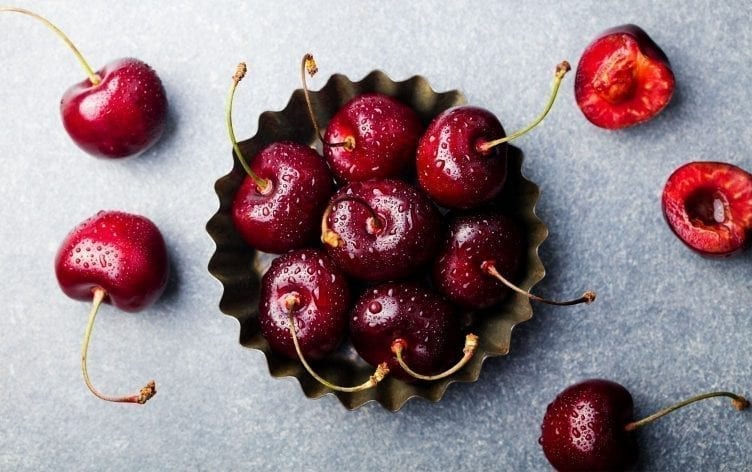
Athletes are often motivated to examine their diets and make changes based on the quest for performance enhancements. While this often includes weight-loss practices, supplements and sport foods, there is a valuable health-promoting and potentially ergogenic aid that is often overlooked: flavonoids.
WHAT ARE FLAVONOIDS?
Flavonoids are antioxidant-rich phytonutrients found in a variety of plant foods including fruits, vegetables, grains, tea, wine, chocolate and even bark.
There are six subgroups of compounds that make up flavonoids, with more than 6,000 individually identified flavonoids. The subgroups are:
- Flavonols
- Flavan-3-ols
- Flavones
- Flavanones
- Isoflavones
- Anthocyanins
This classification can get confusing as many compounds become lumped together interchangeably in common nutrition advice. Individual or groups of flavonoids may occur in the same foods, such as flavan-3-ols and anthocyanins, both occurring in strawberries, or in separate foods such as flavones being the only type found in peppermint.
Together, flavonoids work to improve cellular activity and reduce free-radical damage from stressors. Just as each vitamin is responsible for a different health-promoting bodily function, flavonoids have distinct functions ranging from managing cardiovascular health to hormone balance to anti-inflammatory responses depending on the individual type. This is another reason it is crucial for athletes not to rely on a limited intake of whole foods in favor of sport foods, simple carbs and supplements.
THAT EXTRA EDGE
Flavonoid-rich foods are a valuable part of a health-promoting diet. And there might be proof these compounds can provide athletes with an extra performance edge. When exercise is taken to a point that goes beyond general physical activity and reaches a point of exhaustion, sore muscles and low rest periods, there is a large chance of increased oxidative stress and inflammation in the body. Reducing the ill effects of exercise-induced inflammation is a goal of many competitive athletes. There is evidence flavonoids can be of potential benefit in specific instances, though more research is necessary to pin down its application in real-life athletic situations.
QUERCETIN FOR WEIGHT LOSS AND POWER
Quercetin is a particularly well-studied flavonoid. This compound is found in a variety of plant foods. The highest dietary sources include apples, onions, capers, nuts, buckwheat, cherries, broccoli, red wine, black tea, leafy greens and beans.
Since many foods provide this nutrient, it is likely your diet contains daily quercetin. However, the amount available in food may not be effective in promoting a performance edge. Dietary evaluation concludes the average person consumes up to 40mg/day of this nutrient, however, most studies using this flavonoid provide a dosage of 500mg, which would be equivalent to consuming more than 1/2 cup of red onion a day.
To demonstrate the benefits of quercetin, one study, using a 500mg dosage combined with vitamin C on male athletes, showed an improved metabolic rate, body composition and total energy expenditure. Most athletes would agree lower bodyweight and/or leaner body composition leads to a competitive edge. While this study showed positive outcomes from supplemental flavonoids, it is accepted that those who eat a diet heavier in plant-based, nutrient-rich foods (which double as flavonoid-rich sources) are less likely to suffer from being overweight.
Another study provided flavonoids to well-trained male athletes for four weeks and tested the effects of supplementation on an indoor cycle ergometer. The outcome was a 5% improvement in absolute power output in those receiving the supplementation. Another benefit of these compounds is the ability to improve endurance capacity by increasing VO2max and increasing time to failure by improving cellular mitochondrial biogenesis. This has been demonstrated in research on seven-day supplementation improving VO2max in untrained athletes. It is unclear if well-trained or elite athletes would experience the same benefit.
FOOD SOURCES OF FLAVONOIDS
Most dietary flavonoids are provided by foods rich in fiber, which athletes might be likely to avoid to reduce gut distress, however, certain foods like dark chocolate and tart cherry could provide a beneficial source. Increasing chocolate intake could help athletes meet high-energy demands while providing beneficial nutrients such as iron and flavonoids that might be limited elsewhere in a performance diet. The flavonoids in dark chocolate might play a specific role in improving nitric oxide availability and therefore reducing the oxygen cost of exercise. This is the same action beets are known to improve performance through. A study tested this on moderately competitive male athletes and led to the suggestion that chronic dark chocolate intake could provide VO2max improvements.
Another food generally accepted as performance-benefiting is tart cherry. This is largely due to its content of the flavonoids anthocyanins; a powerful group of antioxidants. Drinking tart cherry juice has helped marathoners recover from muscular damage when consumed throughout a race week by increasing total antioxidant activity. High intake of antioxidants is a largely debated topic in sports nutrition. It is actually contraindicated for training phases as it could blunt the adaptations (gains) from daily training and beneficial oxidative stress. Yet, intense situations where rapid recovery is the main priority, such as stage races, tart cherry juice can be very beneficial to an athlete’s overall performance.
THE BOTTOM LINE
In short, the studies on this topic are diverse and extensive, yet much more research is needed to provide definitive benefits, exact mechanisms of action, and dosing suggestions of individual flavonoids for specific athletic goals.
When you combine the current research with the fact flavonoid-rich foods are generally extremely nutrient-rich, consuming a diet full of these compounds is likely to benefit health regardless of your level of athleticism. Upping your intake should be easy: Snack on an apple, have a lunch of brown rice, beets and arugula or make a cocoa and tart cherry recovery shake for after your next workout.



